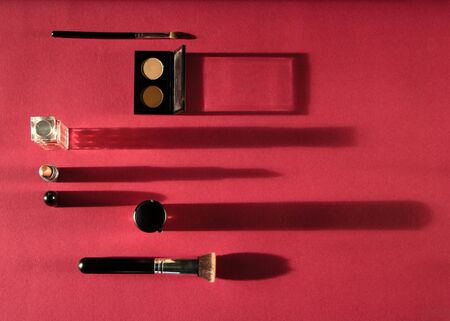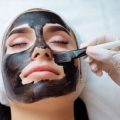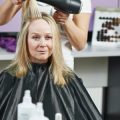1. The Shifting Perception of Masculinity in American Culture
For decades, American culture has defined masculinity through rigid stereotypes—toughness, emotional restraint, and a disinterest in anything considered “feminine.” Beauty products like concealer were once strictly associated with women, making it socially unacceptable for men to engage with them. But times are changing.
Today, the definition of masculinity is evolving. Younger generations in particular are challenging outdated gender norms and embracing self-expression in new ways. In this cultural shift, more men feel comfortable taking care of their appearance—including using skincare and makeup products like concealer.
Why Men Are Embracing Concealer
Concealer offers practical benefits that appeal to anyone, regardless of gender. Whether it’s covering up dark circles after a long night or hiding blemishes before a big meeting, concealer can boost confidence and create a polished look. As more men see these products as tools for self-care rather than vanity, the stigma continues to fade.
Cultural Influences Driving the Change
Several factors are contributing to this shift:
| Influence | Impact on Masculinity |
|---|---|
| Social Media & Influencers | Male influencers openly using beauty products help normalize them for wider audiences. |
| Celebrity Endorsements | Actors, athletes, and musicians breaking grooming taboos challenge traditional norms. |
| Gen Z Attitudes | Younger generations prioritize authenticity over outdated gender roles. |
| Inclusive Branding | Brands targeting all genders make makeup more accessible and less stigmatized. |
A New Era for Men and Makeup
The growing visibility of men using concealer marks a larger movement toward personal freedom and self-expression. As society continues to embrace diverse forms of masculinity, beauty becomes less about gender—and more about feeling good in your own skin.
2. The Rise of Male Beauty Influencers and Celebrities
Over the past few years, male beauty influencers and celebrities have played a huge role in breaking down gender norms around makeup use in the U.S. What was once seen as taboo is now becoming more mainstream, thanks to these bold and inspiring figures who confidently wear concealer, foundation, and other cosmetics—both on social media and in public appearances.
Normalizing Makeup Through Visibility
Visibility is key when it comes to changing societal perceptions. When men with large platforms openly wear makeup, they send a powerful message: makeup isn’t just for women—it’s for anyone who wants to feel confident and express themselves. These influencers are helping young men across the country realize that wearing concealer isn’t about hiding who you are, but highlighting your best self.
Key Male Figures Leading the Movement
Here are some of the most influential male figures who are helping reshape how society views men and makeup:
| Name | Platform | Impact |
|---|---|---|
| James Charles | YouTube / Instagram | As one of the first male beauty gurus to gain mainstream fame, James has been instrumental in making makeup accessible and appealing to all genders. |
| Bretman Rock | TikTok / Instagram | With his bold personality and authentic content, Bretman blends humor with glam, showing that masculinity and makeup can coexist. |
| Manny MUA (Manny Gutierrez) | YouTube / Instagram | Manny is known for his high-quality tutorials and brand collaborations, proving that men can be serious players in the beauty industry. |
| Jonathan Van Ness | Netflix / Instagram | A grooming expert from “Queer Eye,” Jonathan uses his platform to promote self-care and normalize beauty routines for all genders. |
| Luka Sabbat | Fashion / Social Media | A model and actor often seen at fashion shows with minimal makeup looks, Luka bridges the gap between fashion-forward style and everyday wearability for men. |
The Social Ripple Effect
The influence of these men goes far beyond their own followers. As they partner with major brands like Maybelline, CoverGirl, and Fenty Beauty, their visibility creates more inclusive marketing campaigns that represent a broader audience. This shift not only empowers more men to explore cosmetics but also encourages retailers to offer products tailored to different skin tones and types—regardless of gender.
The Power of Representation
Representation matters. When young boys see people like them being celebrated for embracing beauty products, it helps reduce shame and stigma. It also fosters a culture where confidence isnt tied to outdated notions of masculinity. With male beauty influencers leading the charge, concealer is no longer something to be embarrassed about—it’s just another tool for looking and feeling your best.
![]()
3. Why Men Use Concealer: Function Over Fashion
In today’s fast-paced American lifestyle, more men are turning to concealer not for glamour, but for practical reasons. It’s less about chasing trends and more about feeling confident, clean, and put-together—especially in professional and social settings.
Everyday Skin Concerns
Just like women, men deal with skin issues that can affect their self-esteem. Acne, dark circles from lack of sleep, redness, or razor bumps are common concerns that concealer can help address quickly and discreetly.
Common Reasons Men Use Concealer
| Skin Concern | How Concealer Helps |
|---|---|
| Blemishes & Acne | Covers spots and reduces redness for a clearer look |
| Dark Circles | Makes tired eyes appear more awake and refreshed |
| Razor Bumps | Evens out skin tone where irritation occurs after shaving |
| Pigmentation or Scars | Smooths over uneven areas for a more consistent complexion |
A Boost in the Workplace
The American workplace is becoming increasingly image-conscious. Whether it’s for virtual meetings or client-facing roles, appearance plays a role in first impressions. A little concealer can go a long way in helping men look alert and polished without drawing attention to the fact that they’re wearing makeup.
“Its not about looking perfect—its about looking like your best self.”
This mindset is gaining ground among American men who see concealer as a grooming tool rather than a beauty product. Just like using deodorant or styling hair, applying concealer has become part of a broader self-care routine.
No-Fuss Application
You don’t need to be a makeup pro. Many brands now offer easy-to-use stick or pen-style concealers designed specifically with men in mind—simple to apply, blendable with fingers, and subtle in finish. It takes less than a minute and fits seamlessly into any morning routine.
User-Friendly Concealer Features for Men:
| Feature | Description |
|---|---|
| Slim Packaging | Pocket-sized and discreet for on-the-go use |
| Nude Shades | Diverse tones that match natural skin colors without shine or sparkle |
| Creamy Texture | Easily blends with fingers—no brush needed |
| Matte Finish | No glow or shimmer; just natural-looking coverage |
The rise of concealer use among American men isn’t about vanity—it’s about practicality. With simple tools and clear benefits, its an easy way to feel more confident stepping out the door.
4. Marketing Strategies Targeting Men in the U.S. Beauty Market
As more men explore skincare and cosmetics, especially products like concealer, beauty brands in the U.S. are adapting their marketing strategies to speak directly to male consumers. The challenge? Making men feel included without alienating the traditional female customer base.
Inclusive Yet Targeted Messaging
Brands are moving away from heavily gendered advertising and embracing a more inclusive tone that normalizes makeup use for everyone. Campaigns now feature men using concealer confidently as part of their daily grooming routine. Instead of saying “makeup for men,” they highlight benefits like “look refreshed” or “hide dark circles,” which appeal to male concerns without using traditionally feminine language.
Examples of Messaging Adjustments
| Traditional Female-Focused Messaging | Modern Gender-Inclusive Messaging |
|---|---|
| “Flawless skin with every swipe” | “Look well-rested instantly” |
| “Get your glam on” | “Confidence starts with clear skin” |
| “Your secret weapon for contouring” | “Easily conceal blemishes or redness” |
Product Design That Speaks to Men
Packaging plays a big role in attracting male buyers. Brands are simplifying designs—opting for sleek, neutral tones and minimalist branding that feels more like a grooming product than traditional makeup. Some even package concealers in stick or pen forms that resemble shaving tools or pens, making them more approachable.
Popular Product Features Among Male Consumers
- Matte finishes (to avoid shine)
- Fragrance-free formulas
- Compact, portable packaging
- Easy-to-use applicators (like twist-up sticks or click pens)
Strategic Placement and Brand Ambassadors
Instead of placing these products only in beauty aisles, some retailers now also display them near mens grooming sections or online under “mens self-care.” This repositioning helps reduce intimidation and makes it easier for men to discover these products naturally. Additionally, male influencers—from lifestyle vloggers to athletes—are being tapped as brand ambassadors to normalize usage among diverse audiences.
Key Takeaway:
The most effective strategies focus on solving real-life problems (like covering acne or under-eye bags) rather than promoting beauty ideals. By reframing concealer as a tool for confidence and self-care, brands can connect with men while still staying true to their core values and audience.
5. Looking Forward: Inclusivity and the Future of Men in Beauty
The beauty industry in the U.S. is evolving fast, and one of the most exciting changes is the growing inclusivity for men—especially when it comes to products like concealer. While makeup has traditionally been marketed toward women, more brands are beginning to understand that beauty has no gender. The future is about choice, confidence, and representation for everyone.
Where the Industry Is Headed
As conversations around gender identity and expression become more mainstream, beauty brands are starting to listen. We’re seeing shifts not only in advertising but also in product development, shade ranges, and retail experiences. Men are no longer just a niche market—theyre becoming an integral part of the beauty community.
Key Industry Trends
| Trend | Description |
|---|---|
| Gender-Neutral Marketing | Brands are using inclusive language and visuals that appeal to all genders. |
| Expanded Shade Ranges | More skin tones are being represented to meet the needs of a diverse consumer base. |
| Male Beauty Ambassadors | Influencers and public figures who identify as male are becoming faces of major beauty campaigns. |
| Retail Experience Overhaul | Stores are redesigning layouts and training staff to be more inclusive of male shoppers. |
What Brands Can Do
- Create marketing campaigns that feature men confidently using makeup products like concealer.
- Offer tutorials and how-to guides specifically aimed at men who are new to beauty products.
- Collaborate with male influencers from different backgrounds to reach wider audiences.
How Retailers Can Help
- Train employees to assist all customers without assumptions based on gender.
- Stock products in sections that don’t label items as “for women” or “for men.”
- Create welcoming spaces where anyone can test and explore products freely.
The Role of Consumers
- Support inclusive brands by purchasing their products and engaging with their content online.
- Challenge outdated ideas about who makeup is “for” by embracing your own style without apology.
- Encourage friends and family members to keep an open mind about beauty and self-expression.
The journey toward full inclusivity in the U.S. beauty space is ongoing, but the progress so far is promising. With continued effort from brands, retailers, and consumers alike, makeup—including concealer—can become a tool for confidence and creativity for everyone, regardless of gender.


